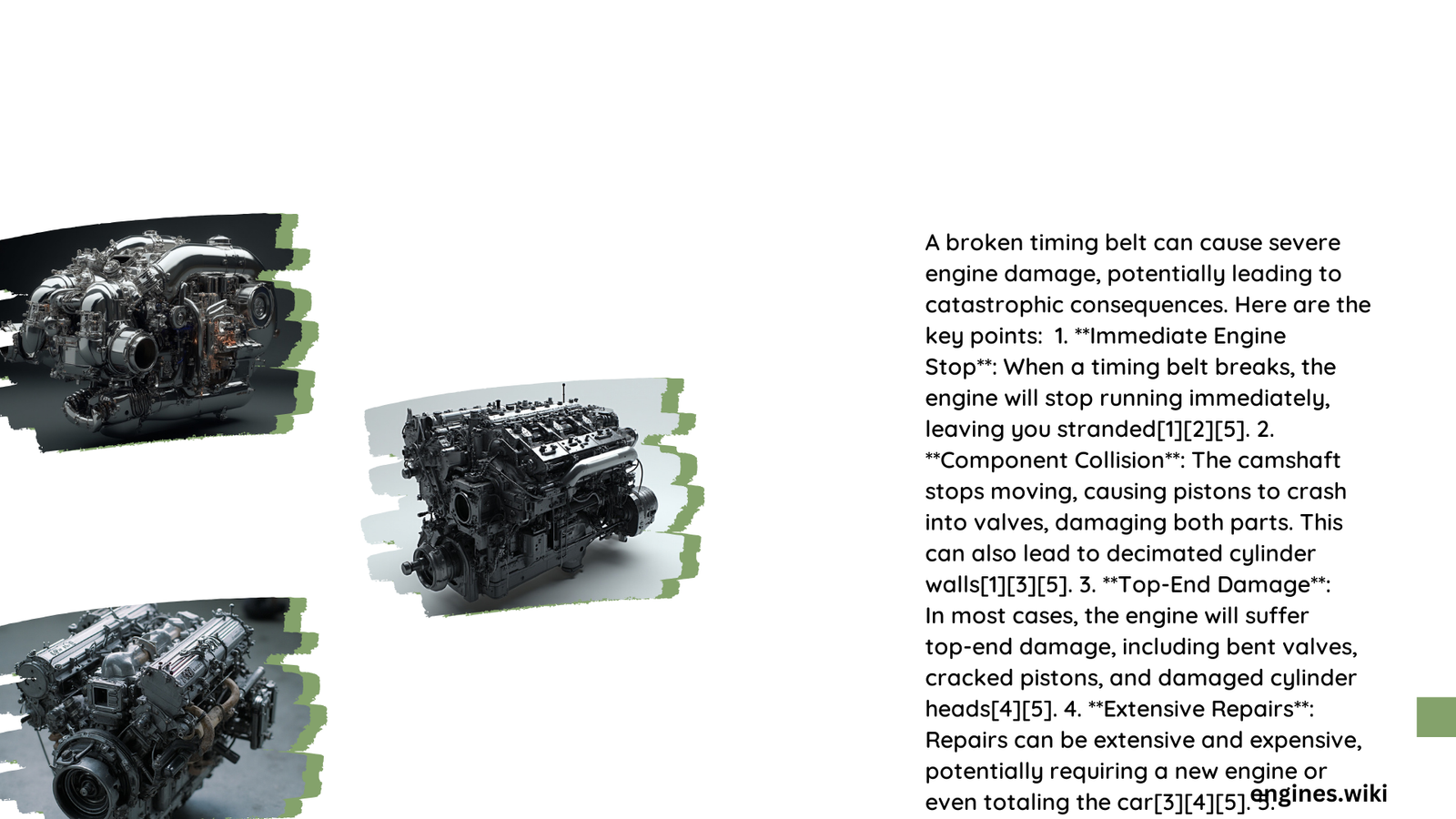A broken timing belt can be a catastrophic event for your vehicle’s engine, particularly in interference engines where valve and piston proximity creates high risk of mechanical destruction. When the timing belt fails, it can cause immediate and severe damage, potentially rendering your engine inoperable and requiring extensive, expensive repairs that could cost thousands of dollars.
What Happens When a Timing Belt Breaks?
Can a Broken Timing Belt Cause Immediate Engine Destruction?
In interference engines, a broken timing belt almost guarantees significant mechanical damage. The precise synchronization between valves and pistons becomes disrupted, leading to potential catastrophic consequences:
- Valve Collision: Pistons and valves can violently collide
- Piston Damage: Critical internal engine components may bend or break
- Potential Total Engine Failure: Repair costs could exceed vehicle’s value
Damage Probability Table
| Engine Type | Damage Likelihood | Potential Repair Cost |
|---|---|---|
| Interference Engine | 90-100% | $2,500 – $5,000 |
| Non-Interference Engine | 10-30% | $500 – $1,500 |
What Determines the Extent of Engine Damage?
Several critical factors influence potential engine destruction:
- Engine Design
- Interference engines have higher damage risk
-
Non-interference engines might survive timing belt failure
-
Moment of Failure
- Engine speed during belt break
-
Whether engine was running or idle
-
Immediate Response
- Stopping engine immediately
- Professional diagnostic assessment
How Expensive Are Potential Repairs?
Repair costs vary dramatically based on damage extent:
- Minor Damage: $500 – $1,500
- Moderate Damage: $1,500 – $3,500
- Catastrophic Damage: $3,500 – $5,000+
- Complete Engine Replacement: $4,000 – $8,000
How Can Vehicle Owners Prevent Timing Belt Failure?
Proactive maintenance remains the most effective strategy:
- Regular Inspection: Follow manufacturer’s recommended intervals
- Timely Replacement: Typically every 60,000-105,000 miles
- Professional Assessment: Annual timing belt system evaluation
- Watch Warning Signs:
- Unusual engine noises
- Visible belt wear
- Difficulty starting engine
What Technical Factors Contribute to Timing Belt Failure?
Technical contributors include:
- Improper tension
- Age-related material degradation
- Contamination
- Coolant or oil leaks
- Misaligned components
Conclusion

A broken timing belt can indeed ruin an engine, especially in interference designs. The potential for catastrophic damage makes preventative maintenance crucial for vehicle longevity and performance.
Recommended Action Steps
- Check manufacturer’s recommended timing belt replacement schedule
- Schedule professional inspection
- Budget for potential timing belt replacement
- Monitor vehicle performance consistently
Reference:
– Car Talk Community
– BobIsTheOilGuy Forum
– 3Si Forum
